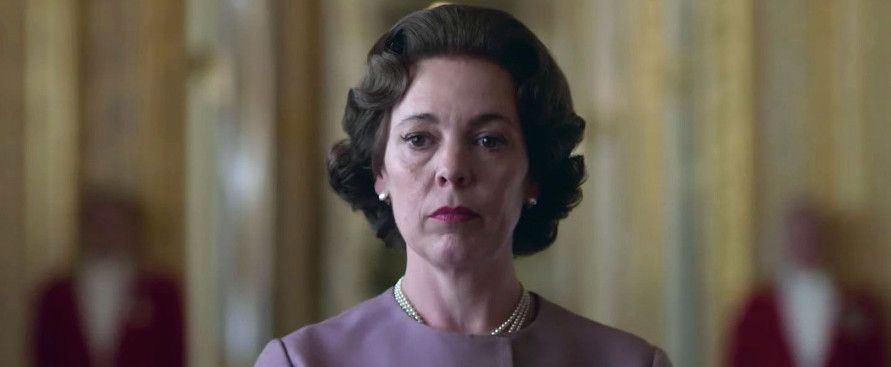“The Crown” Dazzles Viewers with New Cast Members

Despite the critically-acclaimed first seasons of the show’s tenure, Netflix’s “The Crown” faces new challenges this year with the introduction of a brand new cast embodying Britain’s most cherished family. Following the award-winning likes of Claire Foy and John Lithgow, the new cast, starring Olivia Colman, Tobias Menzies and Helena Bonham Carter ultimately lives up to expectations despite an intimidating act to follow.
Released on Nov. 17, the third season’s plot follows Queen Elizabeth II’s (Olivia Colman) reign from 1964 to 1977, beginning with the election of new Labour Party Prime Minister Harold Wilson (Jason Watkins) and ending with her Silver Jubilee, commemorating the 25th anniversary of her accession to the throne. When conceptualizing the series, showrunner Peter Morgan decided to replace the cast every two seasons so as to reflect the true aging of the individuals depicted. In capturing the next decade of the queen’s life, the series maintains its dedication to the format of the previous two seasons — choosing particular moments or vignettes of her life and exposing the nuance not often seen in the public eye.
This sort of consistency is not only tactical but essential in the face of a new cast. The rich storyline engenders the series with a signature and hyper-personal style that differentiates it from other period pieces of the time. Clattering tea pots, clicking loafers and baking corgis provide the soundtrack to the series while the luxurious costumes and set design easily transport the viewers (from most likely their beds or couches) to the Great Britain of their dreams.
The pomp, circumstance and preceding reputation of the series was clearly not lost on the new cast. The first episode begins with Colman staring longingly into the camera, almost acknowledging the prestige and achievement of the past. In this moment, she says, “Age is rarely kind to anyone … Nothing one can do about it. One just has to get on with it.” This statement signaled immediately to the viewers that the old era (or cast) is over, and there is no more time to mourn it. It also set the stage for the rest of the season, indicating that the plot deals heavily with time, aging, sickness, mourning and death — all to be expected of a large multigenerational family.
While I was at first disappointed with Colman’s performance, (probably because I had not yet “got on with it”) her casting demonstrates Morgan’s attention to the delicate dynamics of the family ensemble. In fact, by choosing Colman, Morgan cast a queen who could more readily share the spotlight with other cast members. Colman leans into this, showing the faults, missteps and near inhumane actions that the queen has taken over her reign. As the queen confides and finds security in the often male private secretaries who brief her on day-to-day political ongoings of the Commonwealth, the women surrounding her find solace in one another.
Empowering each other, the women – both young and old – who historically stood in the shadow of the queen slowly start to make their way out. We learn the stories of Princess Margaret (Helena Bonham Carter), Princess Anne (Erin Doherty) and Princess Alice (Jane Lapotaire) — three women who had previously lingered in the Queen’s orbit with little to no mention. Carter’s Princess Margaret explores the tensions between the princess and her sister. One daughter is always the more beautiful and extroverted of the two, but the other one was chosen to be queen. The burden of this knowledge causes Margaret to fall behind her less charismatic sister, often becoming victim to drinking, bouts of depression and also divorce.
At the same time, the show reveals the princess’ exuberant, intellectual and charming side when she is tasked with smoothing over United States diplomatic relations in a state dinner with President Lyndon B. Johnson. She excels in her dealings and is able to retrieve a multi-million bailout for the United Kingdom. These scenes are juxtaposed with those featuring the queen, quietly sitting in her office reading the press about her ever-popular sister.
The relationship between Princess Alice and Princess Anne also brings positive attention to the dynamic women of the royal family. Princess Alice is Prince Philip’s mother, who lived as a nun in Greece. When political upheaval strikes Greece, she is quickly brought to live in Buckingham Palace, where she spends her last few years of life. Diagnosed with schizophrenia and other ailments, Alice faced most of her life’s challenges abandoned and isolated. But when brought to Buckingham Palace, Princess Anne strikes up a tender and loving relationship with her grandmother, calling her “Yaya” and doting on her needs.
The performance and interactions between Lapotaire’s Princess Alice and Doherty’s Princess Anne give an informational and critical glimpse into empathy in the palace, something often hidden behind the grandeur of the monarch. A particular line from the season’s second episode, titled “Margaretology,” encapsulates the tension between the characters, personalities and family members within the Windsor line. When remarking on Princess Margaret’s rapid rise to fame during her brief United States tour, Prince Philip reminisces that “there have always been the dazzling Windsors and the dull ones … Alongside that dull, dutiful, reliable, heroic strain runs another. The dazzling, the brilliant, the individualistic and the dangerous.”
Throughout the series, Princesses Margaret, Anne and Alice establish themselves as unique and individual standouts amongst the ruckus and rubble of not only the palace but also the entire country. In the midst of near financial ruin, miner strikes, an underground coup and widespread discrimination (in this one decade alone), the beauty of the royal family is maintained by the compassionate forces of these three women.
Ultimately, the third season is about juxtaposition — it is the fight between the dazzling versus the dull, and Colman’s performance provides room for the ensemble cast to stand in the spotlight and shine.





Comments ()